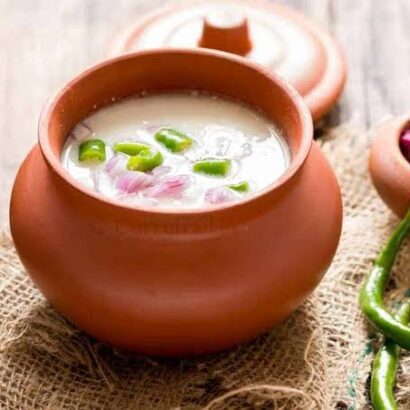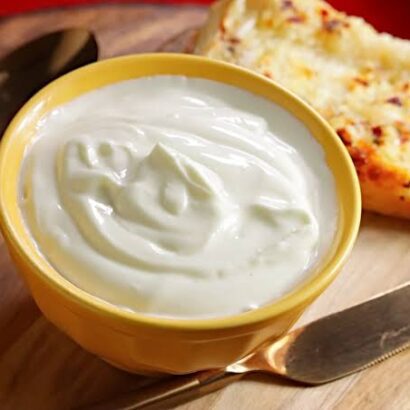Kuzhambu: A Culinary Gem of South India
Kuzhambu is a quintessential South Indian dish that brings together the rich flavors of spices, tamarind, and vegetables. The term “kuzhambu” originates from the Tamil word meaning “a liquid or gravy,” and it is a staple in many households. It is a versatile dish, often served with steamed rice, and comes in numerous varieties, including sambar, vatha kuzhambu, mor kuzhambu, and kara kuzhambu.
Preparation and Ingredients
Kuzhambu is typically made using tamarind as the base for its tangy flavor, along with vegetables like brinjal (eggplant), drumstick, okra, or pumpkin. The addition of lentils, coconut, and spices such as mustard seeds, fenugreek, and curry leaves enhances its taste and aroma. It can also include legumes or even dried lentil-based dumplings (vadai) for added texture.
The preparation style varies across South Indian states, and each version offers a unique twist by incorporating local spices, cooking methods, and ingredients like coconut milk or jaggery.
Nutritional Value of Kuzhambu
Kuzhambu is not only flavorful but also a nutritious addition to your diet.
Rich in Fiber
The vegetables and lentils used in kuzhambu provide a good amount of dietary fiber, aiding digestion and maintaining gut health.
Low in Calories
Kuzhambu is typically low in calories, making it a healthy option for those looking to maintain or lose weight.
Packed with Micronutrients
Tamarind: Rich in vitamin C, antioxidants, and minerals like magnesium and potassium, tamarind boosts immunity and supports cardiovascular health.
Curry Leaves: Loaded with iron, calcium, and vitamins, they enhance bone health and combat anemia.
Fenugreek: Known for its anti-inflammatory and blood sugar-regulating properties.
Protein-Packed
If prepared with lentils or legumes, kuzhambu becomes a good source of plant-based protein, essential for muscle repair and overall growth.
Good Source of Antioxidants
The spices like turmeric, cumin, and mustard seeds used in kuzhambu are rich in antioxidants, helping to reduce inflammation and protect against chronic diseases.
Health Benefits of Kuzhambu
Improves Digestion
The tamarind and spices in kuzhambu stimulate digestive enzymes, ensuring smoother digestion and preventing bloating.
Regulates Blood Sugar Levels
Ingredients like fenugreek seeds and turmeric can help stabilize blood sugar, making kuzhambu beneficial for diabetics.
Boosts Immunity
The combination of tamarind, curry leaves, and spices enhances immune function, protecting the body from infections.
Supports Heart Health
The potassium in tamarind and fenugreek seeds helps regulate blood pressure, while the antioxidants reduce bad cholesterol levels.
Enhances Skin and Hair Health
The nutrients in curry leaves and tamarind promote glowing skin and healthy hair, reducing premature graying and hair fall.
Variations to Explore
Vatha Kuzhambu: A tangy and spicy variant using sundried berries or vegetables.
Mor Kuzhambu: A yogurt-based gravy with a creamy, tangy flavor.
Kara Kuzhambu: A spicy version with tamarind and additional chilies for heat.
Paruppu Kuzhambu: Lentil-based kuzhambu, milder and rich in protein.
Why Include Kuzhambu in Your Diet?
Kuzhambu is a holistic dish that offers an excellent balance of taste, nutrition, and health benefits. Its adaptability to include various vegetables, spices, and proteins makes it suitable for all age groups and dietary preferences. Whether you’re looking for a comforting meal or a nutrient-rich addition to your plate, kuzhambu stands out as a wholesome choice.
Embrace this South Indian treasure and enjoy its timeless flavors while reaping its myriad health benefits.

Kuzhambu Recipe
Here’s a simple recipe for South Indian Kuzhambu, a tangy and flavorful curry made with tamarind and spices. This is a basic version of kara kuzhambu, but you can adjust it to include vegetables or protein like drumstick, brinjal, or lentils.
Ingredients:
For Kuzhambu Base:
Tamarind: 1 small lemon-sized ball (soaked in 1.5 cups of warm water, extract juice)
Turmeric powder: ¼ tsp
Red chili powder: 1 tsp (adjust to taste)
Coriander powder: 1 tbsp
Salt: to taste
Vegetables (optional):
Brinjal, drumstick, or any vegetable of choice: 1 cup (cut into medium-sized pieces)
For Tempering:
Sesame oil (gingelly oil): 2 tbsp
Mustard seeds: ½ tsp
Fenugreek seeds: ¼ tsp
Curry leaves: 1 sprig
Garlic: 6-7 cloves (crushed)
Shallots: 10-12 (peeled and sliced) or 1 medium onion (chopped)
Kuzhambu Masala (Optional but enhances flavor):
Dry red chilies: 2-3
Cumin seeds: 1 tsp
Peppercorns: ½ tsp
Fresh grated coconut: 3 tbsp (optional)
For Garnish:
Fresh coriander leaves: 1 tbsp (chopped)
Method:
Prepare Tamarind Extract:
Soak tamarind in warm water for 10 minutes. Extract the juice and discard the pulp.
Prepare the Masala (if using):
Dry roast red chilies, cumin seeds, peppercorns, and grated coconut till aromatic. Cool and grind to a smooth paste with a little water.
Tempering:
Heat sesame oil in a pan.
Add mustard seeds and let them splutter.
Add fenugreek seeds and curry leaves.
Add crushed garlic and shallots. Sauté until golden and aromatic.
Cooking the Kuzhambu:
Add the vegetables (if using) and sauté for 2-3 minutes.
Add tamarind juice, turmeric powder, red chili powder, coriander powder, and salt. Stir well.
If using the ground masala, mix it in now.
Simmer the kuzhambu on low heat for 15-20 minutes, or until the oil separates and vegetables are cooked.
Finishing Touch:
Adjust salt and consistency (add water if needed).
Garnish with fresh coriander leaves.
Serve:
Serve hot with steamed rice and a side of papad or kootu.
Enjoy your flavorful and comforting kuzhambu.




На этом сайте можно найти информацией о сериале “Однажды в сказке”, развитии событий и ключевых персонажах. однажды в сказке онлайн Здесь представлены интересные материалы о создании шоу, актерах и фактах из-за кулис.
На сайте MixWatch вы сможете найти свежие новости о мире часов.
Здесь публикуются обзоры новых моделей и аналитика известных марок.
Ознакомьтесь с экспертными мнениями по трендам в часовом искусстве.
Следите за всеми событиями индустрии!
https://mixwatch.ru/
На этом сайте можно заказать фирменные сумки Coach https://coach-bag-shop.ru/.
В каталоге представлены стильные модели для любых случаев.
Всякая сумка сочетает в одном надежность и элегантность.
Оформите заказ сейчас и получите доставку в кратчайшие сроки!
На этом сайте можно ознакомиться с информацией о телешоу “Однажды в сказке”, его сюжете и ключевых персонажах. однажды в сказке смотреть Здесь размещены подробные материалы о производстве шоу, исполнителях ролей и фактах из-за кулис.
Программа видеонаблюдения – это актуальное решение для обеспечения безопасности , объединяющий технологии и удобство использования .
На веб-ресурсе вы найдете детальные инструкции по настройке и установке систем видеонаблюдения, включая онлайн-хранилища, их сильные и слабые стороны.
Видеонаблюдение в спорте
Рассматриваются комбинированные системы, сочетающие облачное и локальное хранилище , что делает систему универсальной и эффективной.
Важной частью является описание передовых аналитических функций , таких как определение активности, идентификация элементов и другие AI-технологии .
Программа наблюдения за объектами – это современный инструмент для защиты имущества, сочетающий инновации и простоту управления.
На веб-ресурсе вы найдете подробное руководство по настройке и установке систем видеонаблюдения, включая облачные решения , их преимущества и ограничения .
Программа видеонаблюдения
Рассматриваются комбинированные системы, сочетающие облачное и локальное хранилище , что делает систему более гибкой и надежной .
Важной частью является разбор ключевых интеллектуальных возможностей, таких как детекция движения , распознавание объектов и дополнительные алгоритмы искусственного интеллекта.
Промокоды — это специальные коды, дающие выгоду при оформлении заказа.
Эти купоны применяются в онлайн-магазинах для получения бонусов.
https://re-port.ru/users/54848/
На этом сайте вы найдёте действующие промокоды на товары и услуги.
Применяйте их, чтобы экономить на заказы.
На этом сайте можно найти информацией о телешоу “Однажды в сказке”, развитии событий и главных персонажах. однажды в сказке онлайн Здесь представлены подробные материалы о производстве шоу, актерах и любопытных деталях из-за кулис.
This detailed resource serves as an in-depth guide to the world of modern video surveillance, offering valuable insights for both experienced CCTV installers and entrepreneurs seeking to strengthen their protection systems.
Video Surveillance
The site presents a thorough analysis of remote video surveillance systems, examining their advantages, challenges, and real-world applications.
На этом сайте доступны последние новости России и всего мира.
Здесь можно прочитать ключевые статьи по разным темам .
https://ecopies.rftimes.ru/
Будьте в курсе ключевых событий каждый день .
Проверенная информация и актуальность в каждом материале .
This site, you will find information about 1Win casino in Nigeria.
It covers key features, such as the well-known online game Aviator.
1win Nigeria
You can also explore betting options.
Enjoy an exciting gaming experience!
This site, you will find details about the 1Win gambling platform in Nigeria.
It includes various aspects, including the well-known online game Aviator.
1win
You can also discover betting options.
Take advantage of a seamless gaming experience!
На этом сайте можно заказать увеличение отметок «Нравится» и фолловеров для социальных сетях , таких как ВК, TikTok, Telegram и прочие.
Быстрая и безопасная раскрутка профиля обеспечена.
Тик Ток накрутка бесплатно
Выгодные тарифы и надежное выполнение .
Запустите продвижение прямо сейчас!
Наш веб-портал — востребованное интернет-издание.
Мы быстро публикуем значимые репортажи.
https://rftimes.ru/html/smi.html
Коллектив журналистов стремится предлагать надёжную информацию.
Следите за нами, чтобы оперативно получать актуальные публикации!
Max Mara — культовый итальянский модный бренд, основанный в послевоенные годы дизайнером Акилле Марамотти. Компания быстро превратился в эталоном изысканности и качества.
Фирменный стиль Max Mara строится вокруг классических силуэтов и натуральных материалов, таких как верблюжья шерсть. Легендарное пальто Teddy стало настоящим символом бренда.
http://papillonkey.com/2018/06/28/180618-%d1%80%d0%be%d0%b4%d0%b8%d0%bb%d0%b8%d1%81%d1%8c-%d1%89%d0%b5%d0%bd%d0%ba%d0%b8-%d0%bf%d0%be%d0%bc%d0%b5%d1%82-i/?unapproved=527285&moderation-hash=1dc7d6c2aa47e6cfbd98f56e8e84e99f#comment-527285
Сегодня модный дом выпускает полную линейку одежды, но и обувь. Бренд остаётся примером итальянского качества, привлекая ценителей моды по всему миру.
Burberry — это знаменитый британский бренд, олицетворяющий стиль и элегантность.
Основанный в 1856 году, он прославился благодаря знаменитому узору и тренчкотам.
http://minimoo.eu/index.php/en/forum/suggestion-box/700146-burberry
Сегодня Burberry — это целая индустрия, предлагающая уникальные коллекции и задающая мировые тенденции.
Бренд сочетает традиции и современность, создавая актуальные образы.
На данном сайте у вас есть возможность приобрести онлайн телефонные номера разных операторов. Эти номера могут использоваться для регистрации аккаунтов в различных сервисах и приложениях.
В ассортименте представлены как постоянные, так и одноразовые номера, которые можно использовать для получения сообщений. Это удобное решение если вам не хочет использовать основной номер в сети.
купить временый номер
Процесс покупки очень удобный: выбираете подходящий номер, вносите оплату, и он сразу становится готов к использованию. Оцените сервис уже сегодня!
Inuikii — это европейский бренд, известный на стильной зимней обуви. Он сочетает современный дизайн и премиальные материалы, создавая удобные модели для холодного времени года. Бренд применяет натуральные мех и износостойкие материалы, гарантируя комфорт в любую погоду. Inuikii популярен среди любителей активного отдыха, благодаря уникальному дизайну и практичности.
http://.o.nne.c.t.tn.tu40sarahjohnsonw.estbrookbertrew.e.r40zanele40zel.m.a.hol.m.e.s84.9.83@peterblum.com/releasenotes.aspx?returnurl=http%3A%2F%2Fclassical-news.ru%2Finuikii-stil-teplo-i-elegantnost-v-zimney-obuvi%2F
На этом сайте собрана полезная информация о лечении депрессии, в том числе у возрастных пациентов.
Здесь можно узнать способы диагностики и подходы по восстановлению.
http://approvedbyhud.com/__media__/js/netsoltrademark.php?d=empathycenter.ru%2Farticles%2Fmeksidol-dlya-chego-naznachayut%2F
Отдельный раздел уделяется психологическим особенностям и их влиянию на психическим здоровьем.
Также рассматриваются современные терапевтические и немедикаментозные методы лечения.
Материалы помогут лучше понять, как справляться с депрессией в пожилом возрасте.
На данном сайте вы можете купить аудиторию и лайки для Telegram. Здесь доступны активные аккаунты, которые способствуют росту вашего канала. Оперативная доставка и стабильный прирост обеспечат эффективный рост. Тарифы доступные, а оформление заказа прост. Запустите продвижение уже сегодня и нарастите активность в своем Telegram!
Накрутить подписчиков в Телеграмм канал бесплатно
На этом сайте вы можете заказать аудиторию и лайки для Telegram. Мы предлагаем активные аккаунты, которые помогут росту вашего канала. Оперативная накрутка и стабильный прирост обеспечат успешное продвижение. Тарифы доступные, а оформление заказа прост. Запустите продвижение уже сегодня и увеличьте активность в своем Telegram!
Накрутить подписчиков в Телеграмм бесплатно навсегда канал
На данном сайте вы можете приобрести подписчиков для Telegram. Мы предлагаем активные аккаунты, которые помогут развитию вашего канала. Быстрая доставка и гарантированный результат обеспечат надежный рост подписчиков. Тарифы доступные, а оформление заказа не требует лишних действий. Запустите продвижение уже сегодня и нарастите аудиторию своего канала!
Накрутка подписчиков в Телеграм живые ссылка бесплатно
Центр ментального здоровья — это место, где любой может найти поддержку и квалифицированную консультацию.
Специалисты работают с различными проблемами, включая повышенную тревожность, усталость и депрессивные состояния.
http://spaceloft.info/__media__/js/netsoltrademark.php?d=empathycenter.ru%2Farticles%2Fantidepressanty%2F
В центре используются современные методы лечения, направленные на улучшение внутренней гармонии.
Здесь организована комфортная атмосфера для доверительного диалога. Цель центра — поддержать каждого обратившегося на пути к психологическому здоровью.
Жителю мегаполиса важно быть в курсе актуальными тенденциями моды. В современном мире внешний вид играет важную роль. Одежда и стиль могут подчеркнуть индивидуальность. Кроме того, мода отражает настроение общества. Следя за новыми коллекциями, легче адаптироваться к любым ситуациям. Изучая модные блоги и соцсети, можно вдохновляться новыми идеями. В итоге, модные тренды позволяют идти в ногу со временем.
http://elitecad.pl/forum/viewtopic.php?f=20&t=913&p=499583#p499583214
Клиника премиум-класса предоставляет современное лечение в любых возрастных категориях.
В нашем центре индивидуальный подход всестороннюю диагностику.
Команда профессионалов в нашей клинике лучшие специалисты в своей области, применяющие новейшие технологии.
Мы предлагаем все виды диагностики и лечения, в том числе консультации специалистов.
Забота о вашем здоровье — важнейшая задача нашего коллектива.
Запишитесь на прием, и получите квалифицированную помощь.
constico.com
Современная клиника оказывает широкий спектр медицинских услуг для взрослых и детей.
Наши специалисты имеют многолетний опыт и применяют передовые методики.
Мы обеспечиваем безопасная и уютная атмосфера для диагностики и лечения.
В нашем центре доступны индивидуальный подход для людей с различными потребностями.
Особое внимание мы уделяем профилактике заболеваний.
Каждый посетитель может получить внимательное отношение без очередей и лишнего стресса.
thefishbowled.com
Our e-pharmacy offers a broad selection of pharmaceuticals at affordable prices.
Shoppers will encounter both prescription and over-the-counter medicines for all health requirements.
We strive to maintain safe and effective medications while saving you money.
Quick and dependable delivery ensures that your order is delivered promptly.
Enjoy the ease of getting your meds with us.
https://open.spotify.com/episode/4nIHAKHU9FlZ4TCPuwcIBc
На данной платформе вы найдете центр ментального здоровья, которая предлагает поддержку для людей, страдающих от тревоги и других ментальных расстройств. Мы предлагаем эффективные методы для восстановления ментального здоровья. Наши опытные психологи готовы помочь вам справиться с психологические барьеры и вернуться к гармонии. Квалификация наших психологов подтверждена множеством положительных отзывов. Запишитесь с нами уже сегодня, чтобы начать путь к восстановлению.
http://eventmarket.net/__media__/js/netsoltrademark.php?d=empathycenter.ru%2Fpreparations%2Ff%2Ffenibut%2F
На этом ресурсе вы найдете клинику психологического здоровья, которая предоставляет профессиональную помощь для людей, страдающих от депрессии и других психических расстройств. Мы предлагаем индивидуальный подход для восстановления психического здоровья. Наши опытные психологи готовы помочь вам преодолеть психологические барьеры и вернуться к гармонии. Опыт наших психологов подтверждена множеством положительных обратной связи. Свяжитесь с нами уже сегодня, чтобы начать путь к оздоровлению.
http://jesusreason.com/__media__/js/netsoltrademark.php?d=empathycenter.ru%2Farticles%2Fgemofobiya-boyazn-vida-krovi%2F
На этом ресурсе вы найдете учреждение психологического здоровья, которая обеспечивает профессиональную помощь для людей, страдающих от депрессии и других ментальных расстройств. Мы предлагаем эффективные методы для восстановления ментального здоровья. Врачи нашего центра готовы помочь вам справиться с психологические барьеры и вернуться к гармонии. Квалификация наших специалистов подтверждена множеством положительных рекомендаций. Свяжитесь с нами уже сегодня, чтобы начать путь к оздоровлению.
http://jcgentry.com/__media__/js/netsoltrademark.php?d=empathycenter.ru%2Fpreparations%2Fz%2Fzopiklon%2F
На данной платформе вы найдете клинику психологического здоровья, которая обеспечивает профессиональную помощь для людей, страдающих от депрессии и других психологических расстройств. Мы предлагаем индивидуальный подход для восстановления психического здоровья. Наши опытные психологи готовы помочь вам решить психологические барьеры и вернуться к гармонии. Профессионализм наших психологов подтверждена множеством положительных обратной связи. Свяжитесь с нами уже сегодня, чтобы начать путь к оздоровлению.
http://legendaryinnovations.net/__media__/js/netsoltrademark.php?d=empathycenter.ru%2Fpreparations%2Ff%2Ffenibut%2F
Трендовые фасоны сезона этого сезона задают новые стандарты.
Актуальны кружевные рукава и корсеты из полупрозрачных тканей.
Детали из люрекса придают образу роскоши.
Многослойные юбки возвращаются в моду.
Особый акцент на открытые плечи подчеркивают элегантность.
Ищите вдохновение в новых коллекциях — стиль и качество сделают ваш образ идеальным!
http://www.frontenginedragsters.org/forum/index.php/topic,205053.new.html#new